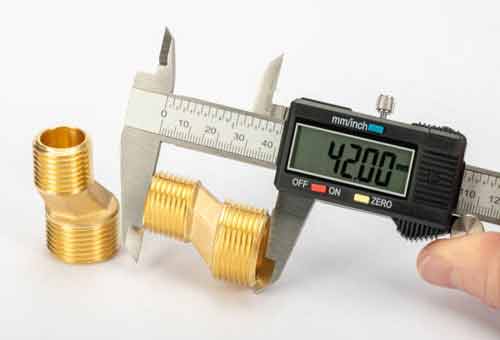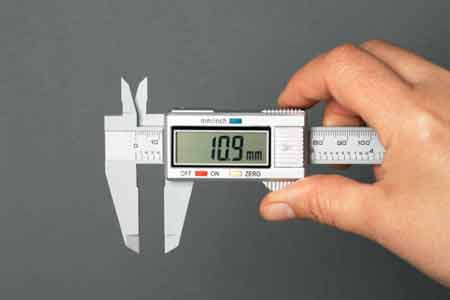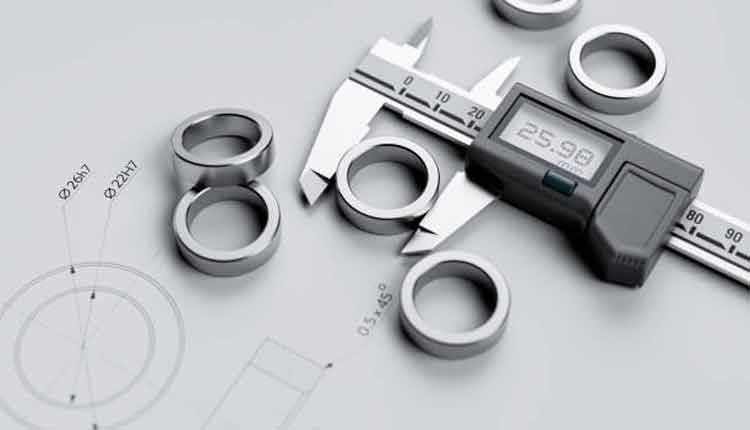Dial calipers are one of the most common types of caliper and can be found in laboratories, workshops, and machine shops. Dial calipers measure depth by using a sliding pinion gear to move the lower jaw which is connected to an index arm with a calibrated dial indicator.
The measurement obtained from the dial indicator should be corrected for any backlash between the moving parts before its read or recorded. This article provides a detailed description of how to use dial calipers correctly.
Tips for Using Dial Calipers Correctly

If you need to hold the calipers in position while reading the dial, use your free hand to turn the slide ring just enough to lock it into place. Never force the movement of a sliding gear. Never twist or bend an arm on the pointer assembly. Follow these tips when using dial calipers for accurate measurements.
Carrying Case
Lubricate moving parts with a few drops of fine instrument oil before storage to prevent rusting or corrosion. Keep the carrying case for your dial calipers clean and free from dirt and grime. Always bring them to a qualified repair technician if there’s any indication of damage, missing parts, or other malfunctions.
Dial Caliper Functions
Dial calipers are constructed of two metal arms which are connected by a hinge. The first arm contains the fixed jaw and is graduated with divisions on its surface. The second arm holds the moveable jaw, the dial pointer, the veneer scale, and also has graduations on its surface.
The main function of a dial caliper is to measure the depth of an object. The depth reading is obtained by moving the lower jaw until it contacts the surface and then reading the dial indicator to obtain a dimension.
Dial Caliper Reading

Before you read any measurements from your dial calipers, check for tactile feedback using your fingertips feel for whether or not there is any free play between moving parts. A loose or limp dial indicates that your dial calipers are not in good working condition, so have they checked by a qualified repair technician before using them again.
Dial Caliper Construction
The jaws of the fixed arm are located at equal distances from each other and are capable of movement with respect to one another. This movement is governed by a toothed locking ring or dial ring. The distance between the jaws of the fixed arm is accurately measured using the vernier scale.
The graduations on the upper surface of each jaw are useful in measuring the gap between two faces, which is not possible with a regular caliper. Dial calipers can measure inside, outside, depth, and step distances accurately.
Dial calipers are usually made of high-quality stainless steel or hardened molybdenum alloy. The jaws of the movable arm of a dial caliper may be smooth or serrated. These features allow them to hold parts securely during measurement.
Mistakes to Avoid When Using Dial Calipers
It is difficult for most people to make accurate measurements using dial calipers because they’re not familiar with their functions. Some of the most common mistakes in measuring are listed below.
- Dial calipers are not used to measure the width of a part. Use calipers for this purpose, instead.
- Don’t rely on your memory in making measurements with dial calipers. Always record them immediately.
- Calibrate your dial calipers before use, especially if they have been dropped or handled roughly.
- Always keep your dial calipers in their cases when not in use.
- Never force the movement of slider on the pointer assembly.
- For best accuracy, slide on pointer should be locked by moving locking ring or dial ring.
Final Thought
Dial calipers are an essential tool for any engineer or craftsman that performs precision measurements. The best way to keep these tools in good working order is by following thetips provided above, so you can use them with confidence and accuracy.

